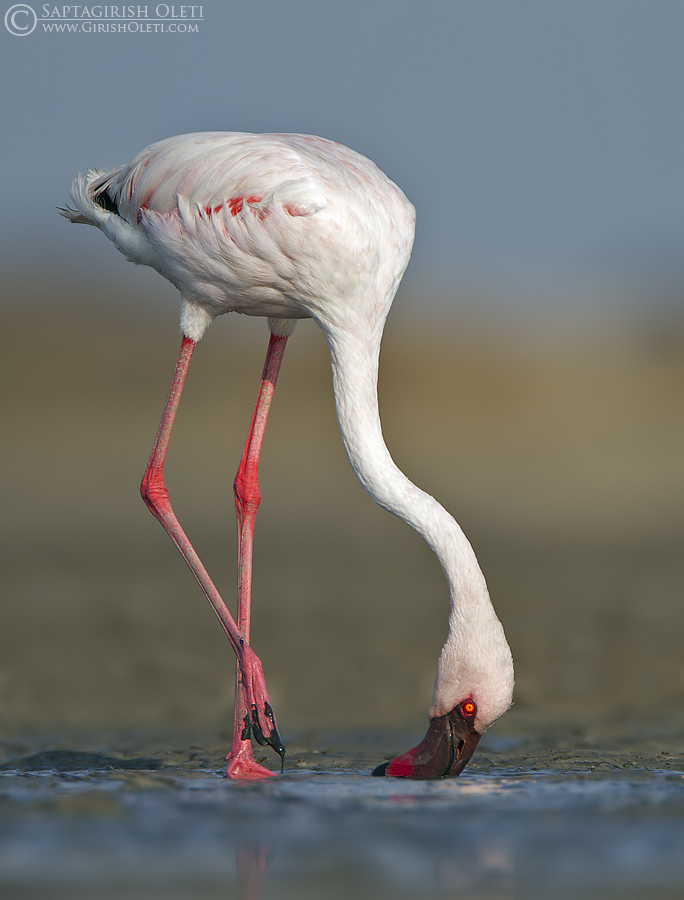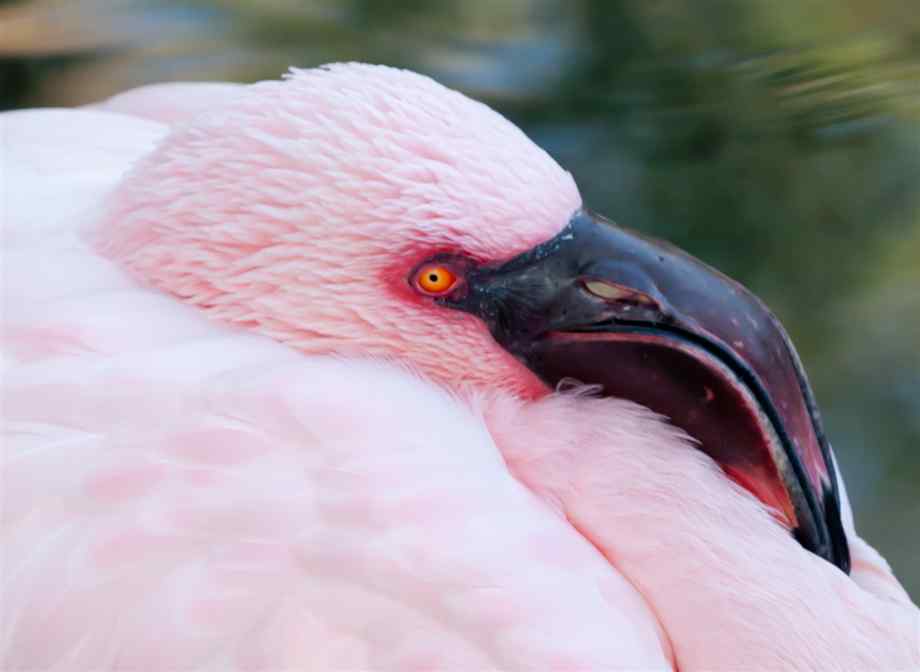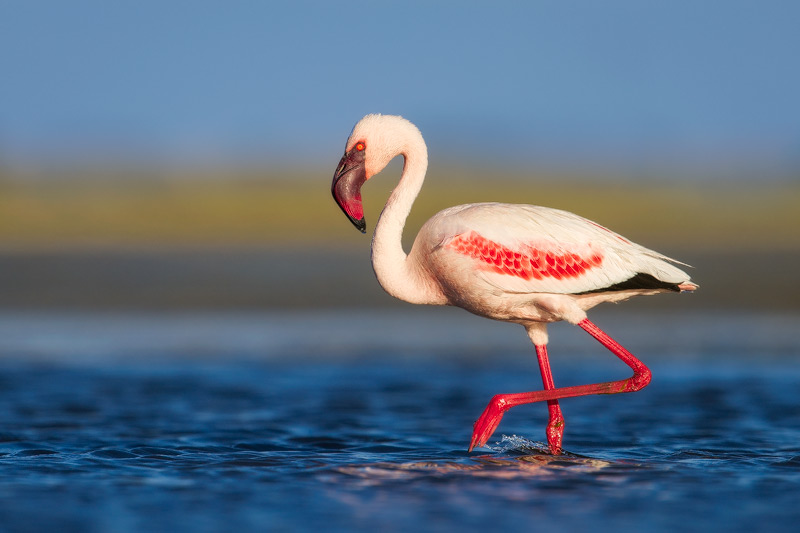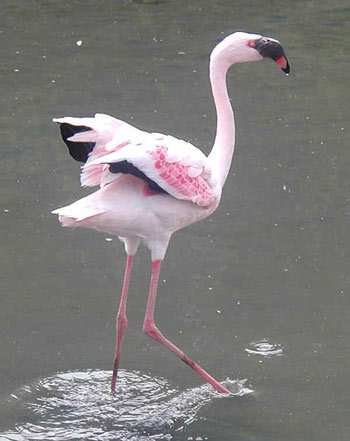
Phoeniconaias minor
TAXONOMY
Phoeniconaias minor Geoffroy, 1798, no locality = Senegal.
OTHER COMMON NAMES
French: Flamant nain; German: Zwergflamingo; Spanish: Flamenco
Enano.
PHYSICAL CHARACTERISTICS
31–35 in (80–90 cm); 3.3–4.4 lb (1.5–2.0 kg); female approximately
10% smaller than male. Smallest of the flamingos, the
adults are similar to the greater flamingo of the European-
African-Asian population but with a proportionately longer
bill, which is much darker red, paler toward the tip, which is
black. Legs are dark pink. Hatchling has bright coral-red legs
and straight reddish pink bill. Juvenile is gray-brown.
DISTRIBUTION
East and South Africa, with small numbers in West Africa and
in Pakistan and India.
HABITAT
Shallow saline and alkaline lakes and lagoons.
BEHAVIOR
Gregarious, with group displays involving ritualized movements
of head and wings, accompanied by loud calls. In flocks
of a few hundred to over one million.
FEEDING ECOLOGY AND DIET
Sieves blue-green algae from shallow water and mud.
REPRODUCTIVE BIOLOGY
Lays single egg (chalky-white, elongated; large but slightly
smaller than P. ruber) on mud nest close to or in shallow water,
the time of breeding being dictated by rainfall rather than seasons.
Nests in dense colonies, up to hundreds of thousands of
pairs. Incubation period 28 days; fledging 70–75 days. Both
parents incubate and care for young, which gather into groups.
Productivity very variable, with complete failures in some
years. Age of first breeding normally three or four years.
CONSERVATION STATUS
Not threatened. Although numbers show huge fluctuations at
individual sites, overall numbers believed more or less stable.
SIGNIFICANCE TO HUMANS
None known.
Other popular Animals
Photo Gallery of - Lesser flamingo




 Animalia Life
Animalia Life